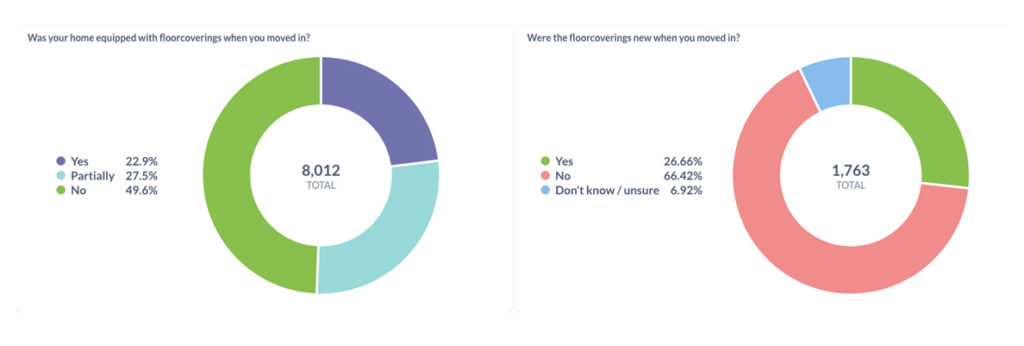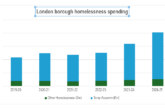The latest Resident Voice Index (RVI) survey reveals that over three-quarters of social housing residents had no or only partial floor coverings in their new home when they moved in, with 75% of these residents indicating a negative sentiment towards this practice.
Now into its fifth study commissioned by MRI Software, which offers social housing solutions as part of its global PropTech offering, the RVI survey asked over 8,000 respondents their opinions on the common policy of removing flooring from social housing properties when tenants vacate regardless of its condition. Previous surveys, which have explored the impact of the cost-of-living crisis, revealed the unexpected cost of floor coverings was an area, which impacted tenants.
The new RVI survey data shows that negative sentiments on floor coverings were almost entirely linked to the rising cost-of-living crisis, with worry and concerns expressed over the financial stress of paying for what, in most cases, is an unexpected cost. Of those who have since installed new flooring in their homes, 50% spent over £1,000 — more than the average UK electricity bill of £738 per year. Younger people and those with dependents were also much more likely to take a loan to fund their floorcoverings, with some taking over five years to repay the debt.
 In addition to the unexpected cost, respondents told of experiencing safety issues in their homes while they waited to have flooring installed, such as children being injured by nails or carpet gripper rods:
In addition to the unexpected cost, respondents told of experiencing safety issues in their homes while they waited to have flooring installed, such as children being injured by nails or carpet gripper rods:
- “I felt bad for my children as they kept injuring their feet on the floorboards and nails that were left,” said one tenant.
- “My children were young and learning to walk. I felt like I wasn’t providing them with a safe, comfortable home,” explained another.
Results further show that 57% of respondents felt the lack of floor coverings when they moved in had a negative impact on integration within the community. Residents experienced social isolation as a result of feeling unable to entertain in their new homes.
- “It was depressing, and my children felt too embarrassed to have school friends over,” noted one respondent.
- “I felt that I wasn’t worthy of flooring because I was a council tenant,” said another. “Had I been renting in the private sector, having no flooring would have been unacceptable.”
Of the 25% of social housing tenants whose properties did have flooring included, 60% were positive about having flooring left behind from a previous tenancy, even if they later chose to replace this. The survey data indicates that over 50% of residents would have preferred the previous floor coverings to have been left and that families with children were particularly likely to have preferred the option to keep the previous flooring.
James Lavery, Vice President of Marketing, EMEA, MRI Software, said: “Our studies over the past few years have shown that social housing residents are having a really tough time as they struggle to weather the cost-of-living crisis. There’s a clear practicality, not to mention environmental issues when floor coverings are removed, and we can see that there’s a real difference in social housing residents’ ability to thrive and integrate into their communities when their new home is provided with floor coverings compared to without.”
James added: “This is an important issue for social housing providers to address, and at MRI Software we’re keen to foster a discussion into how the situation could be improved and whether social housing residents could be given more choice regarding previous tenants’ flooring when they move into a new home.”










